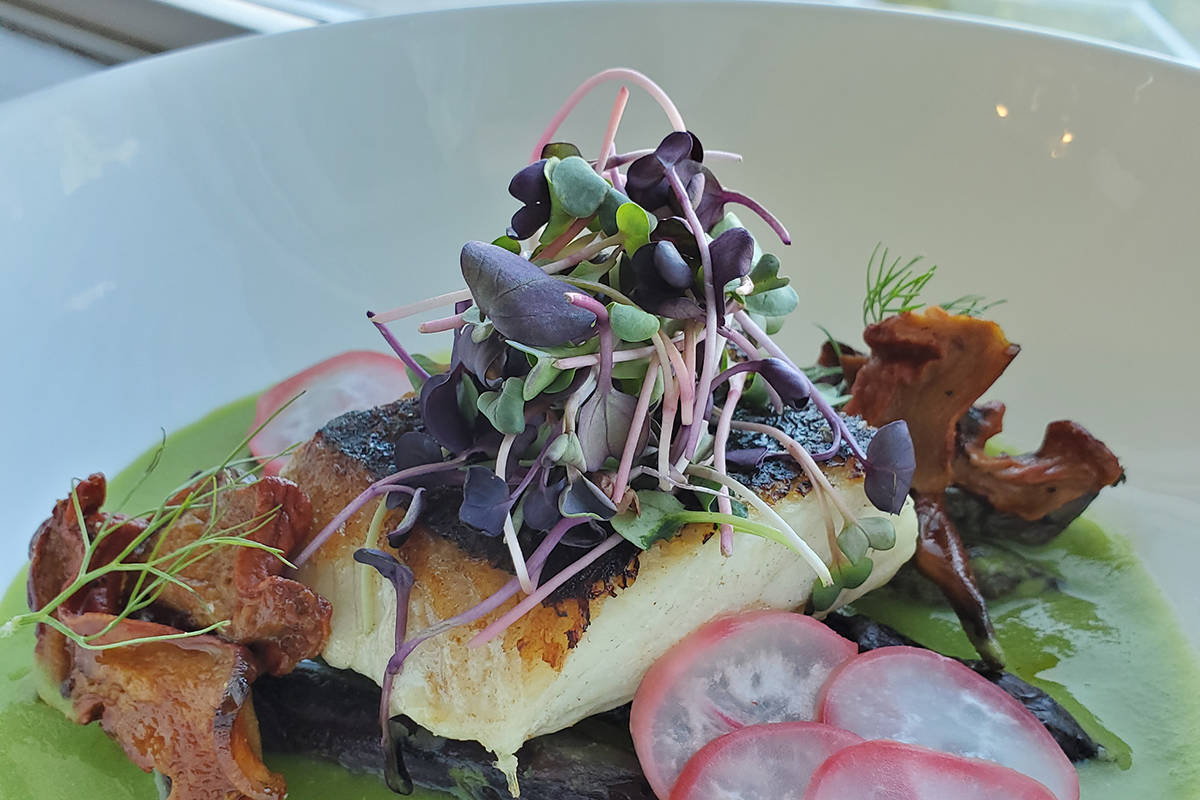Edible cannabis has come a long way from the brownies scarfed down in parking lots that were like the Russian roulette of how high you’d get. (We all know that guy who got the corner piece with all the THC and thought he was going to die.)
Legal edibles are meticulously dosed so consumers know exactly what they’re taking. Still, they tend to be gummies, candies and brownies. Sweet this, decadent that.
But gummies aren’t where the real potential lies, according to one B.C. cook.
Self-taught private chef Travis Petersen looks at cannabis as a super-food, prized for its own unique flavours and health benefits. It pairs as excellently with fresh spot-prawn ceviche as it does with crispy-skin halibut or hummus.
Cannabis strains get their flavour from terpenes — a compound found in herbs, fruits and other plants.
“I start with the terpene profile of a strain of cannabis, and I’ll build the dish outwards that way,” Petersen said.
During this year’s halibut season, he started with a cannabis strain that has pinene terpenes, the same found in cilantro, basil and parsley. He made a mint-pea sauce to pair with the bright flavours in the terpene CBD oil, and served it over crispy-skin halibut and asparagus.
This is a far cry from the bitter cannabis butter amateur home cooks started with.
Developing cannabis as a legitimate culinary ingredient is a passion for Petersen who went from selling oil and gas to cooking with cannabis oil almost overnight. A brief stint on Master Chef and losing his job to lay offs were the catalysts that led him to start his private chef business, The Nomad Cook. He didn’t start out with cannabis, but when the idea hit — inspired by a front-page newspaper article that he never actually read — he ran with it.
Petersen served his first culinary cannabis meal on April 20, 2018 — 420, icymi — at a pop-up restaurant in his home. He flipped the table five times a day for four days, and realized he had hit on something people were craving.
As a West Coaster, Petersen loves pairing cooking seafood, and says the healthy fats in fish are the perfect thing to pair with cannabis. The active compounds in cannabis (THC, tetrahydrocannabinol, which gives the psychoactive effects and CBD, cannabidiol, that affects the body) bind to saturated fats. That’s why cannabis infused oils are so common.
For home cooks making their own butter or oils, the first thing is to get the dosage right. “It costs $40 to get butter or oil lab tested. If you’re going to serve other people, make sure you know exactly what you’re serving them.”
Next, play with the flavours. His current obsession is cannabis ice cream, flavoured with nothing more than the terpenes.
“We’re going right after the cannabis flavours, so highlighting that citrus, earthy skunkiness but in an appetizing way. I just made this ice cream sandwich and it was a nutty, earthy almost pistachio tasting ice cream. And then we coated it with a salted caramel dark chocolate.”
The focus on sophistication is deliberate. The days of those parking lot brownies are long, long gone.
“When you come to my dinners the goal’s not to get you super stoned, but it’s to hit that perfect medium and put you in that relaxed state,” Petersen said.
He sees a great opportunity for Canadian chefs to develop cannabis as a culinary ingredient, both for its health benefits and its flavour. “We’re very lucky first country of chefs who can fully legally work with this ingredient.”
For those curious to try a savoury cannabis dish, Petersen shared this recipe for an infused vinaigrette:
- 1 tbsp red wine vinegar
- 2/3 cup CBD infused olive oil (make your own, or wait for Petersen’s line of cannabis olive oils coming out this fall)
- 2 cloves garlic (minced)
- 2 tsp Dijon mustard
- Salt
- Fresh cracked peppercorns
- Capers
- Olives (sliced)
1. In a metal bowl add the red wine vinegar, Dijon mustard & garlic. Gradually pour in the infused olive oil while whisking vigorously until full emulsified.
2. Add capers & olives. Season with salt and pepper.
3. Serve over fresh salad.
4. If storing for future use, properly label container with the dose per tablespoon and that its infused. Keep out of the reach of children.

